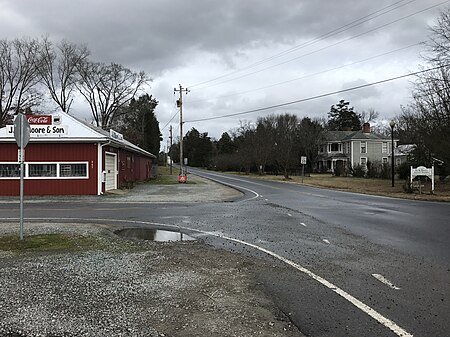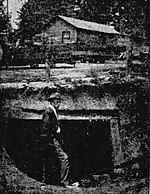Gulf, North Carolina
Census-designated places in Chatham County, North CarolinaCensus-designated places in North CarolinaChatham County, North Carolina geography stubsUse mdy dates from July 2023

Gulf is an unincorporated community and census-designated place (CDP) in southwestern Chatham County, North Carolina, United States, southeast of the town of Goldston. As of the 2010 census, the Gulf CDP had a population of 144. The community is home to a general store and several historic homes. It received its name from its location at a wide bend in the Deep River. Gulf is an interconnection point between the Norfolk Southern Railway and the Aberdeen, Carolina and Western Railway.
Excerpt from the Wikipedia article Gulf, North Carolina (License: CC BY-SA 3.0, Authors, Images).Gulf, North Carolina
Foushee Road,
Geographical coordinates (GPS) Address Nearby Places Show on map
Geographical coordinates (GPS)
| Latitude | Longitude |
|---|---|
| N 35.559722222222 ° | E -79.280555555556 ° |
Address
Foushee Road 92
27252
North Carolina, United States
Open on Google Maps



